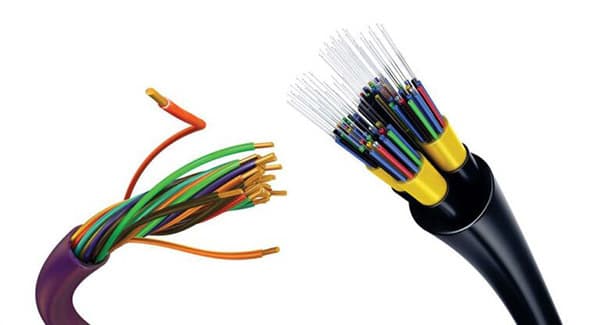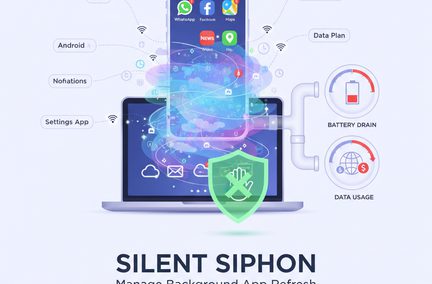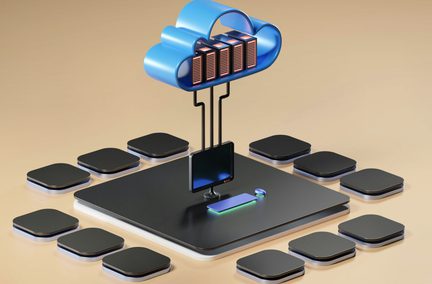What’s the Difference Between FTTN, FTTC, FTTH, & FTTD?
Dec 7, 2021

In the internet world, there are all sorts of ways to get the signal to your house through various cables and connections, even through the air from space, although that is becoming less and less common every day. The most popular delivery systems are copper cable and fiber optics.
If you are on a fiber-optic network, that does not necessarily mean your connection is sent via fiber optics the entire way to your home. In some cases, the signal travels most of the way and then converts to a different medium for final delivery. Let’s look at the four most common fiber delivery methods and the benefits and drawbacks of each.
FTTN
Fiber-to-the-Node (FTTN) involves the least amount of fiber and the highest amount of copper because the fiber stops a long way from home. A node is a connection hub near a neighborhood, but the distance from your home can vary greatly up to a mile away. In an FTTN structure, the signal coming into the node is sent through fiber, but once it leaves the node and heads to your neighborhood – and ultimately to your home – it travels via copper cable. The big drawback of this transport can be a substantial loss of signal from the node to your computer because copper cannot carry the bandwidth or send a signal at the speeds and reliability of fiber optics over distance. The greater the distance from the node to the home, the more significant the signal loss. While this is certainly better than a pure copper connection, the conversion from copper to fiber defeats the purpose of a fiber network if the last long distance is copper.
FTTC
The next best, but less-than-perfect connection is Fiber-to-the-Curb or FTTC. Just like FTTN, FTTC converts a fiber optic signal down to copper, but the distance is shorter because the fiber terminates nearer to your home, sometimes as close as the edge of your front or back yard. With FTTC, the fiber connection is laid to a pedestal that sits in the yard, but then the signal transfers to a copper cable from the pedestal to the home. As before, the signal can slightly degrade at the point where copper enters the network. This shorter distance reduces the signal loss, but there still is some.
FTTH
Most fiber optic internet providers work within a Fiber-to-the-Home or FTTH model, which is almost completely fiber from beginning to end, except for the last few feet. This connection uses fiber all the way to the outside of the building, whether a single-family dwelling or a complex, such as apartments or condos. From there, the fiber terminates and leads into copper cables inside to the router. As in every fiber-to-copper connection, the transition loses a bit of speed and bandwidth, but this short distance is less impactful than longer copper runs.
FTTD
In a perfect world, every connection would be FTTD or Fiber-to-the-Desk. This 100% fiber-optic connection offers the clearest signal and the best transmission from start to finish. With FTTD, the signal never changes mediums, transmitting via fiber optics all the way to the back of your router, offering the clearest signal and best data integrity, as well as reduced jitter and latency. Fiber optic manufacturer Corning pioneered the FTTD technology in the early 2000s as part of a Department of Defense contract to build new internet capabilities in the Pentagon and Ft. Belvoir, Virginia. Today, FTTD offers home and business customers the clarity of fiber optics from beginning to end, including right into your wireless router at home.
More than just initials
While upload and download speeds are huge considerations when choosing an internet medium – copper vs. fiber – other factors play into your overall internet experience. For example, jitter, latency, ping, and lag can affect the quality of your connection. If the signal has to transfer from one medium to another – e.g., from fiber to copper or vice versa – those four rates can increase, causing bumps in your connectivity. But a completely fiber-optic network, with no medium transfers, ensures the best, most reliable connectivity.

Remember in Ghostbusters when Harold Ramis warned his fellow ghoul catchers about never crossing the streams? We highly doubt you’ll summon strange creatures from the afterlife by mixing fiber with copper, but we’re not willing to let you take the chance, so Gateway Fiber’s complete network is 100% FTTD, offering our customers the best internet connection on the planet (and so far as we know, better than on any other planet, too).







